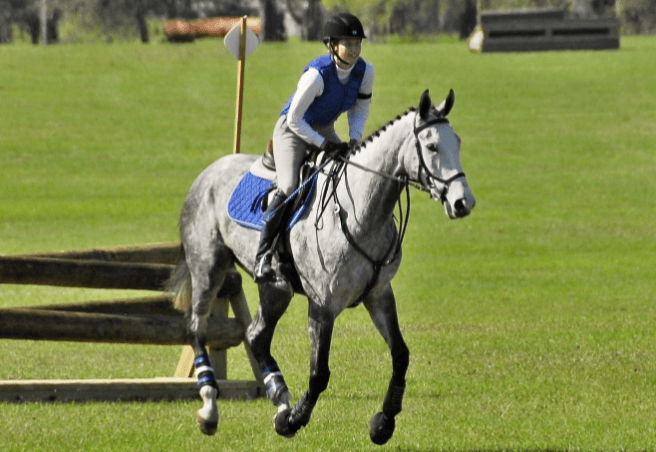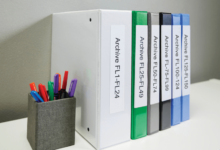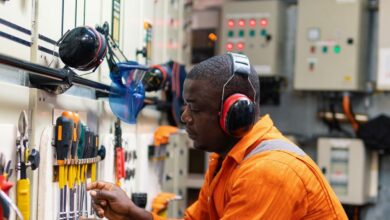How can riders and horses train for the diverse demands of eventing?

Introduction to Eventing
History and Overview
Eventing has a rich history that dates back to military training, where cavalry horses and riders were tested for versatility and endurance. This tradition evolved into a competitive sport that now features prominently in international equestrian competitions, including the Olympics.
Importance of Training
Training for eventing is crucial as it ensures both horse and rider are prepared for the rigorous demands of each phase. Proper training enhances performance, reduces the risk of injury, and builds the confidence needed to excel in this challenging sport.
Understanding the Three Phases
Dressage
Dressage is often described as the “ballet of equestrian sports.” It emphasizes precision, grace, and the harmonious relationship between horse and rider. Training for dressage focuses on developing the horse’s flexibility, balance, and obedience.
Cross-Country
Cross-country is the most physically demanding phase, requiring horses and riders to navigate a course with various obstacles, including ditches, water, and solid fences. This phase tests stamina, bravery, and the ability to maintain speed and control over varied terrain.
Show Jumping
Show jumping involves navigating a course of fences within a set time. It tests the horse’s agility and the rider’s ability to guide the horse accurately. Precision, speed, and coordination are key to succeeding in this phase.
Essential Qualities of Eventing Horses
Physical Attributes
Eventing horses need to be athletic and strong, with excellent stamina. They should have a balanced conformation that supports agility and endurance. Good jumping ability and a strong, supple back are also crucial.
Mental Attributes
A good eventing horse must be bold and willing, able to handle the stress and unpredictability of competitions. They should be intelligent and trainable, with a calm disposition to perform well under pressure.
Rider Skills for Eventing
Balance and Coordination
Riders must develop exceptional balance and coordination to effectively communicate with their horses. Exercises such as pilates and yoga can enhance these skills, ensuring the rider remains stable and poised throughout each phase.
Mental Preparation
Mental toughness is critical in eventing. Riders must learn to manage stress, stay focused, and remain confident. Techniques such as visualization, meditation, and breathing exercises can help build mental resilience.
Creating a Training Plan
Assessing Current Skills
Before creating a training plan, assess your current skills and your horse’s abilities. Identify strengths and areas needing improvement. This assessment will guide your training focus and help set realistic goals.
Setting Goals
Set short-term and long-term goals for your training. Short-term goals might include mastering specific dressage movements or improving cross-country speed. Long-term goals could focus on competing at a higher level or achieving personal bests.
Weekly Training Schedule
A balanced training schedule should include sessions for dressage, cross-country, and show jumping, along with conditioning and rest days. Consistency is key to building endurance and improving performance across all phases.
Dressage Training Techniques
Basics of Dressage
Start with basic dressage movements, focusing on rhythm, suppleness, and connection. Exercises such as circles, serpentines, and transitions between gaits build the foundation for more advanced work.
Advanced Dressage Movements
As you progress, incorporate more complex movements like shoulder-in, half-pass, and flying changes. These exercises enhance your horse’s flexibility and responsiveness, crucial for high-level dressage performance.
Cross-Country Training Techniques
Conditioning for Stamina
Cross-country demands high levels of stamina. Incorporate long, steady hacks and hill work to build your horse’s cardiovascular fitness. Interval training can also improve both speed and endurance.
Jumping Obstacles
Practice jumping a variety of obstacles to prepare for cross-country courses. Use natural elements like logs and ditches, and gradually introduce more complex combinations. Focus on maintaining rhythm and control.
Show Jumping Training Techniques
Improving Jump Accuracy
Accuracy is vital in show jumping. Set up grids and related distances to practice precise jumping. Work on approaching jumps straight and maintaining a steady pace to reduce faults.
Speed and Agility Drills
Incorporate drills that enhance your horse’s agility and quickness. Use pole exercises and small jumps to practice tight turns and quick transitions, which are essential for timed show jumping rounds.
Building Endurance for Both Horse and Rider
Cardiovascular Conditioning
Cardiovascular fitness is essential for both horse and rider. For horses, incorporate regular gallops and interval training. Riders should engage in aerobic activities like running or cycling to build their own endurance.
Strength Training
Strength training improves overall performance and reduces injury risk. For horses, include hill work and gymnastic exercises. Riders can benefit from weight training and core exercises to enhance stability and strength.
Safety Measures in Eventing Training
Protective Gear
Safety is paramount in eventing. Ensure both horse and rider are equipped with appropriate protective gear. For riders, this includes helmets, body protectors, and proper footwear. Horses should wear leg protection and properly fitted tack.
Risk Management
Develop a risk management plan that includes regular safety checks of equipment and the training environment. Stay informed about common injuries and how to prevent them. Always have a first aid kit on hand.
Nutrition and Diet for Horses
Balanced Diet Essentials
A balanced diet is crucial for maintaining your horse’s health and performance. Ensure they receive adequate forage, grains, and vitamins. Consult with a veterinarian or equine nutritionist to tailor a diet specific to your horse’s needs.
Supplements for Performance
Consider supplements to support your horse’s performance and recovery. Electrolytes, joint supplements, and probiotics can be beneficial, but always consult with a professional before introducing new products.
Nutrition and Diet for Riders
Healthy Eating Habits
Riders need to maintain a healthy diet to perform at their best. Focus on a balanced intake of carbohydrates, proteins, and fats. Avoid processed foods and ensure meals are nutrient-dense.
Hydration Tips
Staying hydrated is essential, especially during intense training sessions. Drink plenty of water throughout the day and consider sports drinks for replenishing electrolytes after rigorous workouts.
Mental Toughness in Eventing
Overcoming Fear
Fear can be a significant barrier in eventing. Addressing it through gradual exposure and positive reinforcement can help. Work with a coach or sports psychologist if needed to develop strategies for managing fear.
Building Confidence
Confidence comes from preparation and experience. Regular training, positive self-talk, and setting achievable goals can help build your confidence over time. Celebrate small successes to maintain a positive mindset.
Using Technology in Training
GPS and Heart Rate Monitors
Technology can enhance training by providing valuable data. GPS and heart rate monitors can track your horse’s fitness levels and help you adjust training intensity accordingly.
Video Analysis
Recording training sessions and competitions allows for detailed analysis. Review footage to identify areas for improvement and refine techniques. Share videos with coaches for expert feedback.
Common Mistakes in Eventing Training
Overtraining
Overtraining can lead to burnout and injury. Balance intense sessions with adequate rest and recovery. Listen to your horse and watch for signs of fatigue or discomfort.
Ignoring Basics
Focusing too much on advanced techniques while neglecting basic skills can hinder progress. Ensure a solid foundation in fundamental movements and principles before advancing to more complex exercises.
Tips for Competition Day
Pre-Event Preparation
Prepare thoroughly before competition day. Ensure all equipment is in good condition, pack essentials ahead of time, and review the competition schedule. Arrive early to acclimate your horse to the environment.
Managing Nerves
Competition nerves are common. Develop a pre-event routine that includes relaxation techniques like deep breathing or visualization. Stay focused on your goals and remember to enjoy the experience.
Post-Event Recovery
Cool Down Routines
Proper cool-down routines are essential after intense workouts or competitions. Walk your horse until their breathing normalizes and muscles relax. Stretching exercises can aid in muscle recovery.
Evaluating Performance
After an event, evaluate your performance to identify strengths and areas for improvement. Reflect on what went well and what can be adjusted in your training plan. Use this analysis to set new goals.
FAQs
How can riders and horses train for the diverse demands of eventing?
Training for eventing requires a balanced approach, incorporating dressage, cross-country, and show jumping disciplines. Riders and horses should develop specific skills for each phase, build endurance, and maintain a strong mental and physical conditioning program. Consistent practice, proper nutrition, and safety measures are also critical.
What are the key qualities of a good eventing horse?
A good eventing horse should possess athleticism, stamina, and agility. They need to be bold, intelligent, and trainable, with a calm demeanor to handle the stress of competitions. Physical attributes like a strong, supple back and good jumping ability are essential.
How important is mental preparation in eventing?
Mental preparation is crucial in eventing. Riders must manage stress, stay focused, and build confidence. Techniques like visualization, meditation, and positive self-talk can help enhance mental resilience, which is vital for handling the pressures of competition.
What should be included in a rider’s diet to optimize performance?
A rider’s diet should be balanced and nutrient-dense, including a mix of carbohydrates, proteins, and fats. Avoid processed foods and focus on whole foods like fruits, vegetables, lean proteins, and whole grains. Staying hydrated is also essential for maintaining energy levels.
How can technology enhance eventing training?
Technology such as GPS and heart rate monitors can provide valuable data on a horse’s fitness and training intensity. Video analysis allows riders to review their performance, identify areas for improvement, and receive expert feedback from coaches.
What are common mistakes to avoid in eventing training?
Common mistakes include overtraining, which can lead to burnout and injury, and neglecting basic skills while focusing on advanced techniques. Maintaining a balanced training schedule and ensuring a strong foundation in fundamental movements are key to avoiding these pitfalls.
Conclusion
Training for the diverse demands of eventing is a comprehensive process that requires dedication, discipline, and a strategic approach. By understanding and addressing the specific needs of dressage, cross-country, and show jumping, riders and horses can achieve excellence in this challenging sport. Remember to balance intense training with adequate rest, prioritize safety, and continuously seek improvement through reflection and feedback. With the right preparation and mindset, success in eventing is well within reach.





